Comprehensive Analysis of HRM Practices: Recruitment to Legislation
VerifiedAdded on 2024/04/26
|30
|4351
|431
Report
AI Summary
This report provides a comprehensive analysis of Human Resource Management (HRM) practices, segmented into recruitment and selection at Wood Hill College, employee performance and development at Tesco, and factors influencing HR decision-making. The report evaluates the strengths and weaknesses of different recruitment approaches, the role of HRM in talent acquisition, and the impact of technology. It examines the benefits of HRM practices for both employers and employees, focusing on training, development, and reward systems. Furthermore, it analyzes the importance of employee relations and employment legislation in shaping HRM decisions, providing specific examples from ITV. The report concludes by highlighting the critical aspects of HRM in fostering organizational growth and employee satisfaction.
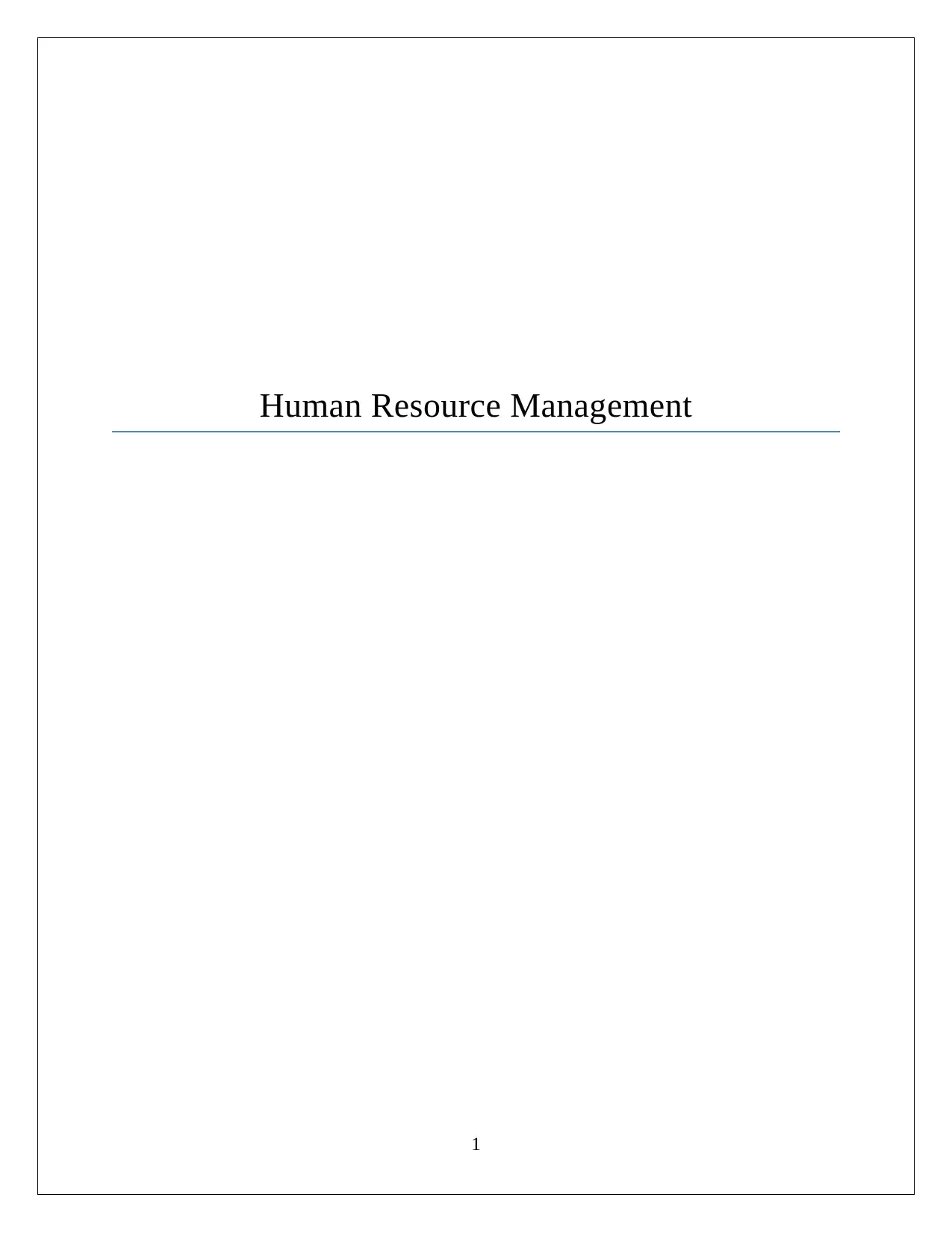
Human Resource Management
1
1
Paraphrase This Document
Need a fresh take? Get an instant paraphrase of this document with our AI Paraphraser
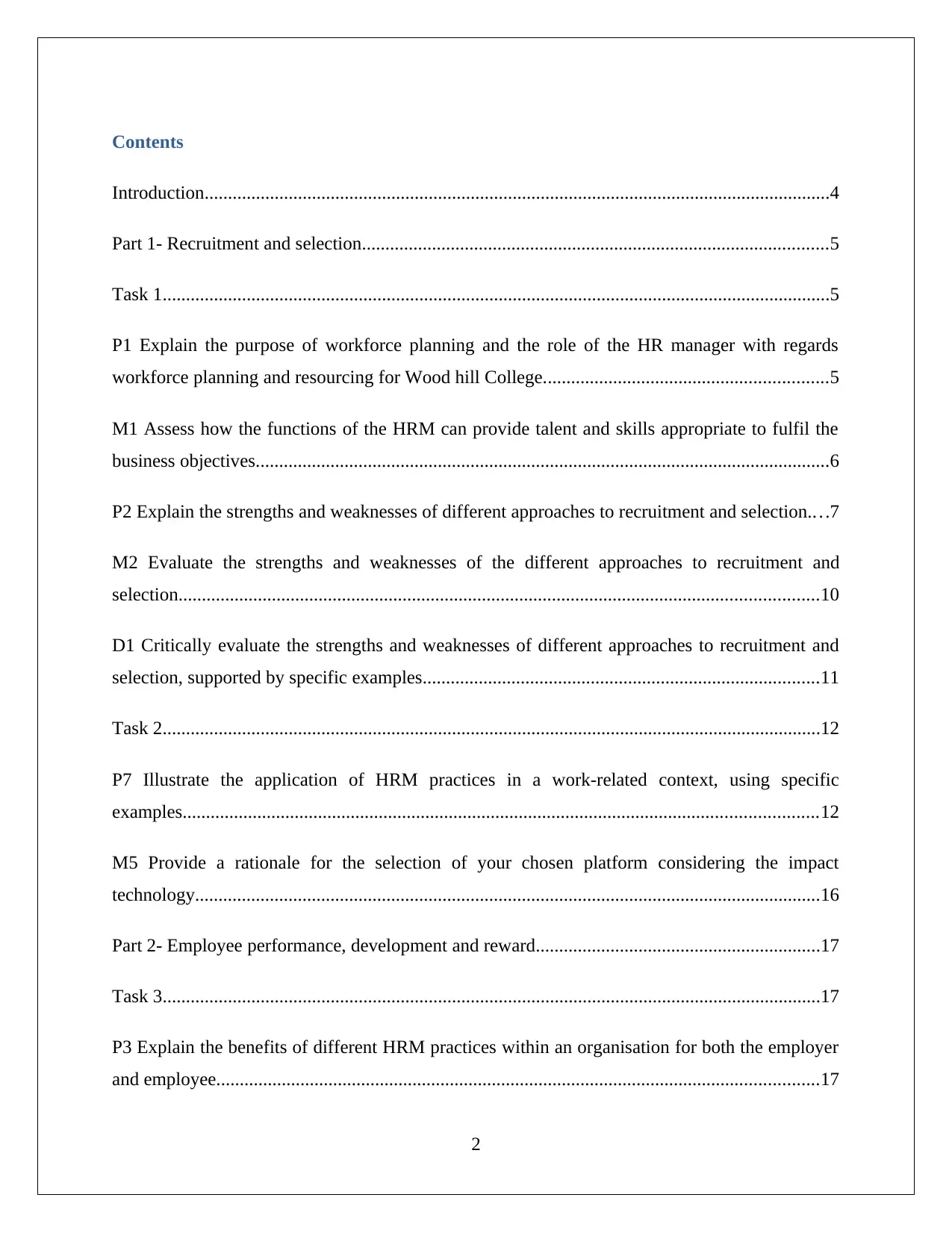
Contents
Introduction......................................................................................................................................4
Part 1- Recruitment and selection....................................................................................................5
Task 1...............................................................................................................................................5
P1 Explain the purpose of workforce planning and the role of the HR manager with regards
workforce planning and resourcing for Wood hill College.............................................................5
M1 Assess how the functions of the HRM can provide talent and skills appropriate to fulfil the
business objectives...........................................................................................................................6
P2 Explain the strengths and weaknesses of different approaches to recruitment and selection....7
M2 Evaluate the strengths and weaknesses of the different approaches to recruitment and
selection.........................................................................................................................................10
D1 Critically evaluate the strengths and weaknesses of different approaches to recruitment and
selection, supported by specific examples.....................................................................................11
Task 2.............................................................................................................................................12
P7 Illustrate the application of HRM practices in a work-related context, using specific
examples........................................................................................................................................12
M5 Provide a rationale for the selection of your chosen platform considering the impact
technology......................................................................................................................................16
Part 2- Employee performance, development and reward.............................................................17
Task 3.............................................................................................................................................17
P3 Explain the benefits of different HRM practices within an organisation for both the employer
and employee.................................................................................................................................17
2
Introduction......................................................................................................................................4
Part 1- Recruitment and selection....................................................................................................5
Task 1...............................................................................................................................................5
P1 Explain the purpose of workforce planning and the role of the HR manager with regards
workforce planning and resourcing for Wood hill College.............................................................5
M1 Assess how the functions of the HRM can provide talent and skills appropriate to fulfil the
business objectives...........................................................................................................................6
P2 Explain the strengths and weaknesses of different approaches to recruitment and selection....7
M2 Evaluate the strengths and weaknesses of the different approaches to recruitment and
selection.........................................................................................................................................10
D1 Critically evaluate the strengths and weaknesses of different approaches to recruitment and
selection, supported by specific examples.....................................................................................11
Task 2.............................................................................................................................................12
P7 Illustrate the application of HRM practices in a work-related context, using specific
examples........................................................................................................................................12
M5 Provide a rationale for the selection of your chosen platform considering the impact
technology......................................................................................................................................16
Part 2- Employee performance, development and reward.............................................................17
Task 3.............................................................................................................................................17
P3 Explain the benefits of different HRM practices within an organisation for both the employer
and employee.................................................................................................................................17
2
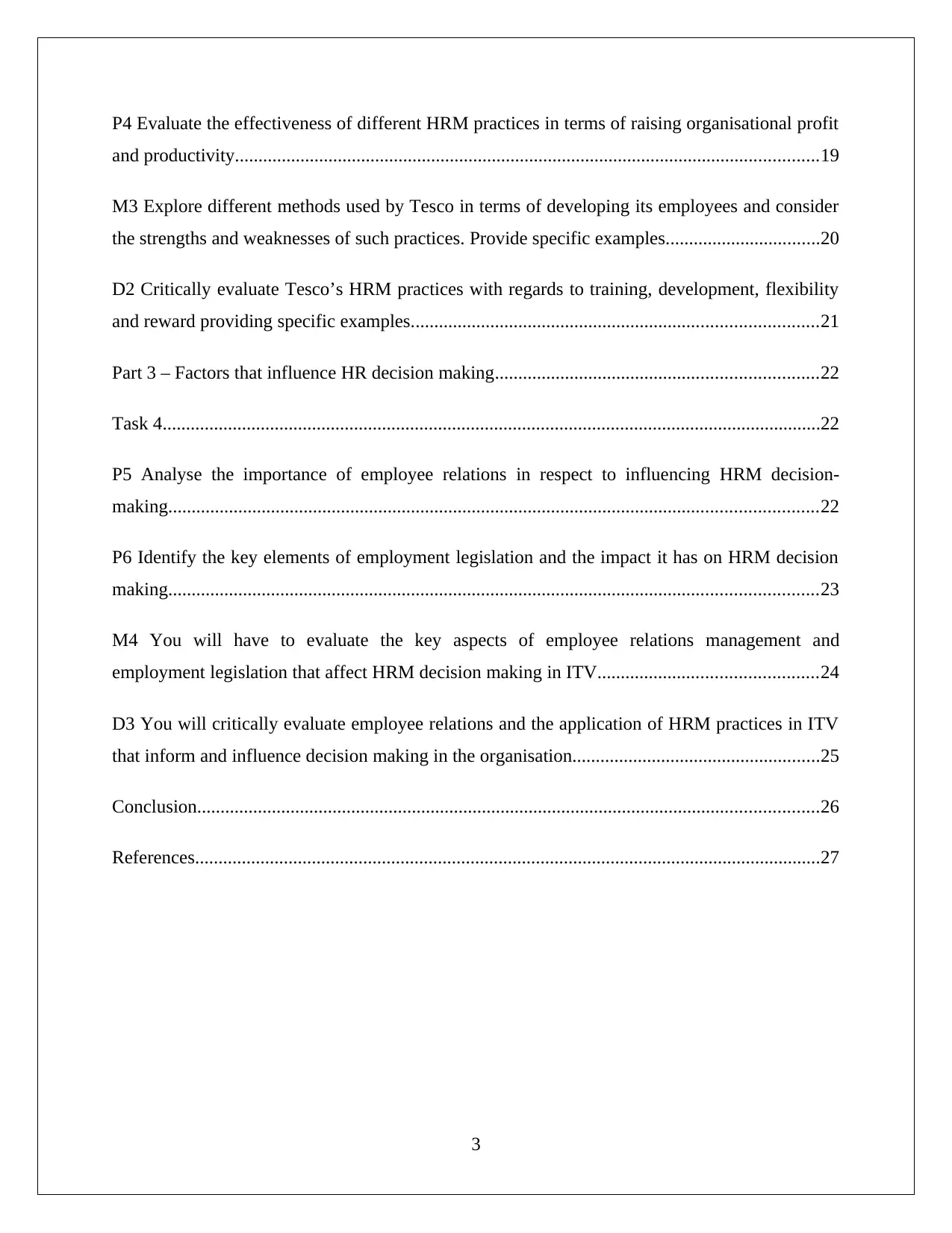
P4 Evaluate the effectiveness of different HRM practices in terms of raising organisational profit
and productivity.............................................................................................................................19
M3 Explore different methods used by Tesco in terms of developing its employees and consider
the strengths and weaknesses of such practices. Provide specific examples.................................20
D2 Critically evaluate Tesco’s HRM practices with regards to training, development, flexibility
and reward providing specific examples.......................................................................................21
Part 3 – Factors that influence HR decision making.....................................................................22
Task 4.............................................................................................................................................22
P5 Analyse the importance of employee relations in respect to influencing HRM decision-
making...........................................................................................................................................22
P6 Identify the key elements of employment legislation and the impact it has on HRM decision
making...........................................................................................................................................23
M4 You will have to evaluate the key aspects of employee relations management and
employment legislation that affect HRM decision making in ITV...............................................24
D3 You will critically evaluate employee relations and the application of HRM practices in ITV
that inform and influence decision making in the organisation.....................................................25
Conclusion.....................................................................................................................................26
References......................................................................................................................................27
3
and productivity.............................................................................................................................19
M3 Explore different methods used by Tesco in terms of developing its employees and consider
the strengths and weaknesses of such practices. Provide specific examples.................................20
D2 Critically evaluate Tesco’s HRM practices with regards to training, development, flexibility
and reward providing specific examples.......................................................................................21
Part 3 – Factors that influence HR decision making.....................................................................22
Task 4.............................................................................................................................................22
P5 Analyse the importance of employee relations in respect to influencing HRM decision-
making...........................................................................................................................................22
P6 Identify the key elements of employment legislation and the impact it has on HRM decision
making...........................................................................................................................................23
M4 You will have to evaluate the key aspects of employee relations management and
employment legislation that affect HRM decision making in ITV...............................................24
D3 You will critically evaluate employee relations and the application of HRM practices in ITV
that inform and influence decision making in the organisation.....................................................25
Conclusion.....................................................................................................................................26
References......................................................................................................................................27
3
⊘ This is a preview!⊘
Do you want full access?
Subscribe today to unlock all pages.

Trusted by 1+ million students worldwide
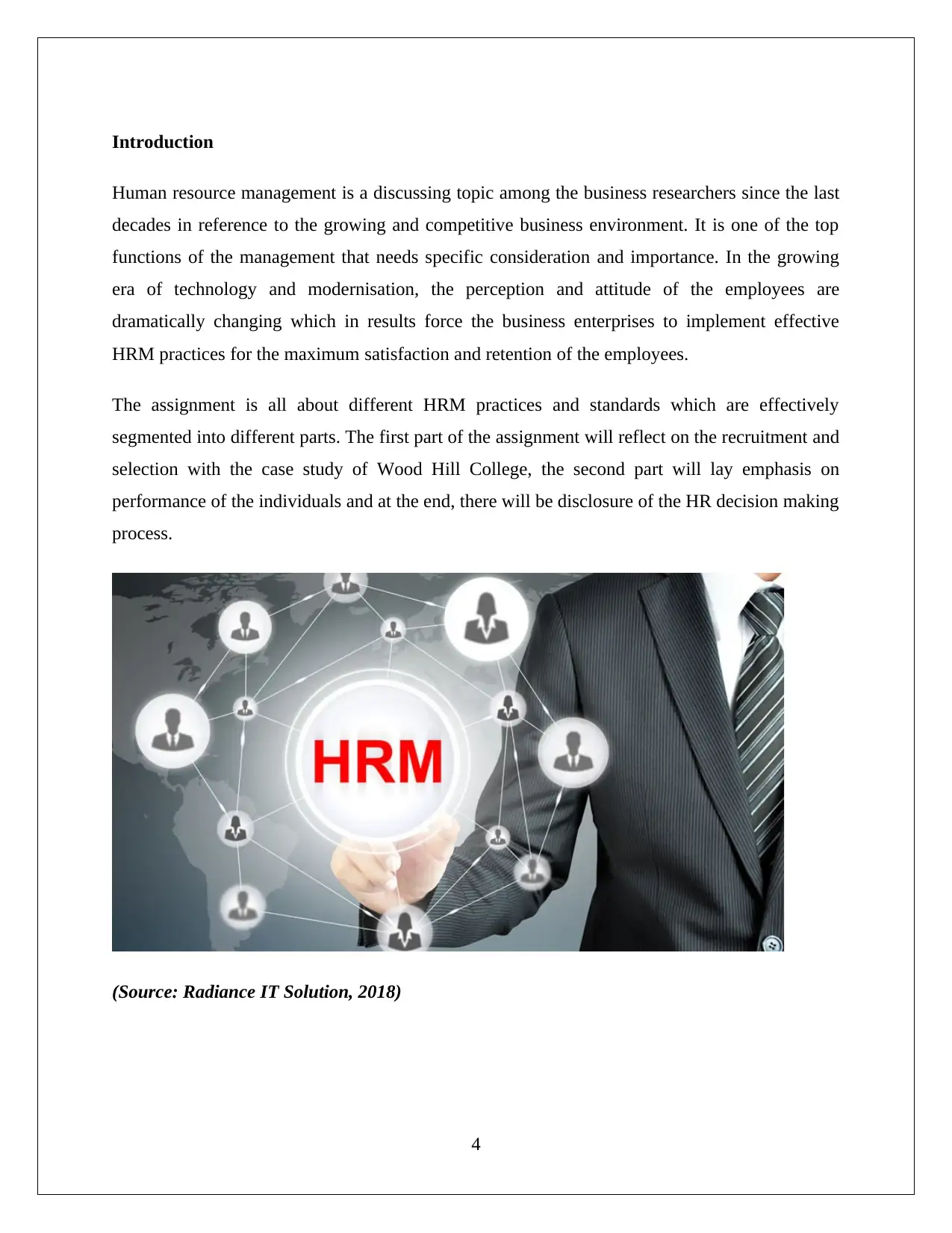
Introduction
Human resource management is a discussing topic among the business researchers since the last
decades in reference to the growing and competitive business environment. It is one of the top
functions of the management that needs specific consideration and importance. In the growing
era of technology and modernisation, the perception and attitude of the employees are
dramatically changing which in results force the business enterprises to implement effective
HRM practices for the maximum satisfaction and retention of the employees.
The assignment is all about different HRM practices and standards which are effectively
segmented into different parts. The first part of the assignment will reflect on the recruitment and
selection with the case study of Wood Hill College, the second part will lay emphasis on
performance of the individuals and at the end, there will be disclosure of the HR decision making
process.
(Source: Radiance IT Solution, 2018)
4
Human resource management is a discussing topic among the business researchers since the last
decades in reference to the growing and competitive business environment. It is one of the top
functions of the management that needs specific consideration and importance. In the growing
era of technology and modernisation, the perception and attitude of the employees are
dramatically changing which in results force the business enterprises to implement effective
HRM practices for the maximum satisfaction and retention of the employees.
The assignment is all about different HRM practices and standards which are effectively
segmented into different parts. The first part of the assignment will reflect on the recruitment and
selection with the case study of Wood Hill College, the second part will lay emphasis on
performance of the individuals and at the end, there will be disclosure of the HR decision making
process.
(Source: Radiance IT Solution, 2018)
4
Paraphrase This Document
Need a fresh take? Get an instant paraphrase of this document with our AI Paraphraser
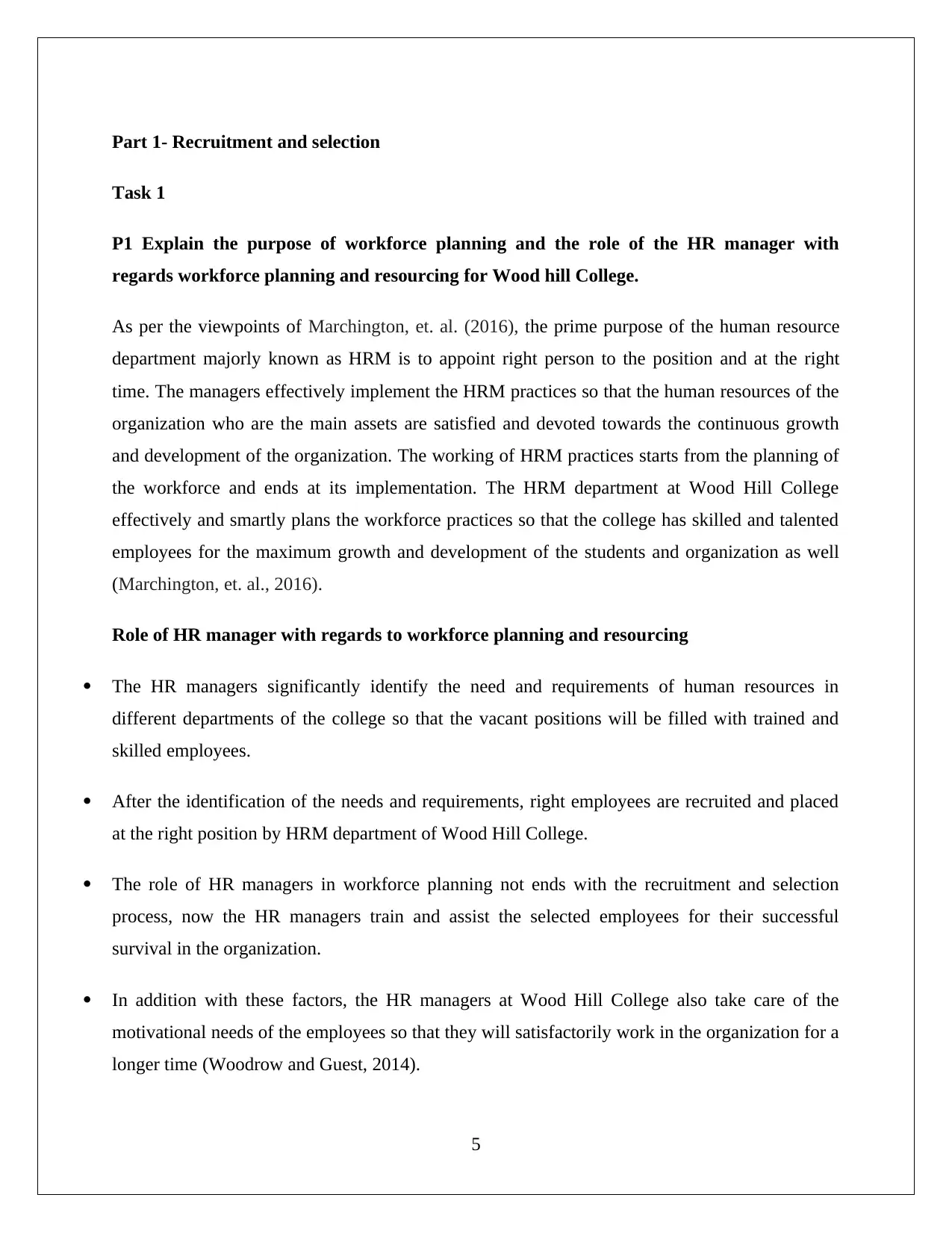
Part 1- Recruitment and selection
Task 1
P1 Explain the purpose of workforce planning and the role of the HR manager with
regards workforce planning and resourcing for Wood hill College.
As per the viewpoints of Marchington, et. al. (2016), the prime purpose of the human resource
department majorly known as HRM is to appoint right person to the position and at the right
time. The managers effectively implement the HRM practices so that the human resources of the
organization who are the main assets are satisfied and devoted towards the continuous growth
and development of the organization. The working of HRM practices starts from the planning of
the workforce and ends at its implementation. The HRM department at Wood Hill College
effectively and smartly plans the workforce practices so that the college has skilled and talented
employees for the maximum growth and development of the students and organization as well
(Marchington, et. al., 2016).
Role of HR manager with regards to workforce planning and resourcing
The HR managers significantly identify the need and requirements of human resources in
different departments of the college so that the vacant positions will be filled with trained and
skilled employees.
After the identification of the needs and requirements, right employees are recruited and placed
at the right position by HRM department of Wood Hill College.
The role of HR managers in workforce planning not ends with the recruitment and selection
process, now the HR managers train and assist the selected employees for their successful
survival in the organization.
In addition with these factors, the HR managers at Wood Hill College also take care of the
motivational needs of the employees so that they will satisfactorily work in the organization for a
longer time (Woodrow and Guest, 2014).
5
Task 1
P1 Explain the purpose of workforce planning and the role of the HR manager with
regards workforce planning and resourcing for Wood hill College.
As per the viewpoints of Marchington, et. al. (2016), the prime purpose of the human resource
department majorly known as HRM is to appoint right person to the position and at the right
time. The managers effectively implement the HRM practices so that the human resources of the
organization who are the main assets are satisfied and devoted towards the continuous growth
and development of the organization. The working of HRM practices starts from the planning of
the workforce and ends at its implementation. The HRM department at Wood Hill College
effectively and smartly plans the workforce practices so that the college has skilled and talented
employees for the maximum growth and development of the students and organization as well
(Marchington, et. al., 2016).
Role of HR manager with regards to workforce planning and resourcing
The HR managers significantly identify the need and requirements of human resources in
different departments of the college so that the vacant positions will be filled with trained and
skilled employees.
After the identification of the needs and requirements, right employees are recruited and placed
at the right position by HRM department of Wood Hill College.
The role of HR managers in workforce planning not ends with the recruitment and selection
process, now the HR managers train and assist the selected employees for their successful
survival in the organization.
In addition with these factors, the HR managers at Wood Hill College also take care of the
motivational needs of the employees so that they will satisfactorily work in the organization for a
longer time (Woodrow and Guest, 2014).
5
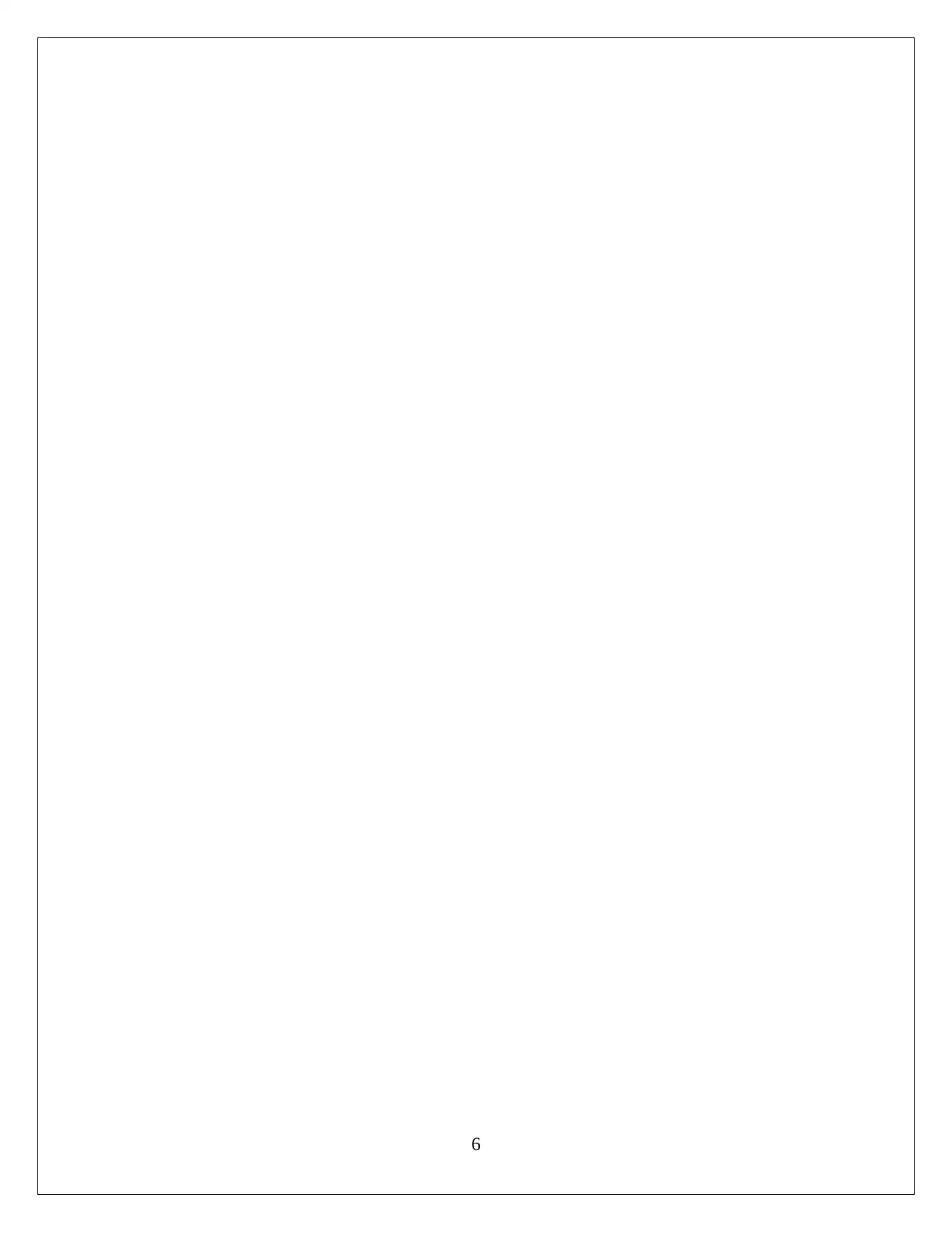
6
⊘ This is a preview!⊘
Do you want full access?
Subscribe today to unlock all pages.

Trusted by 1+ million students worldwide
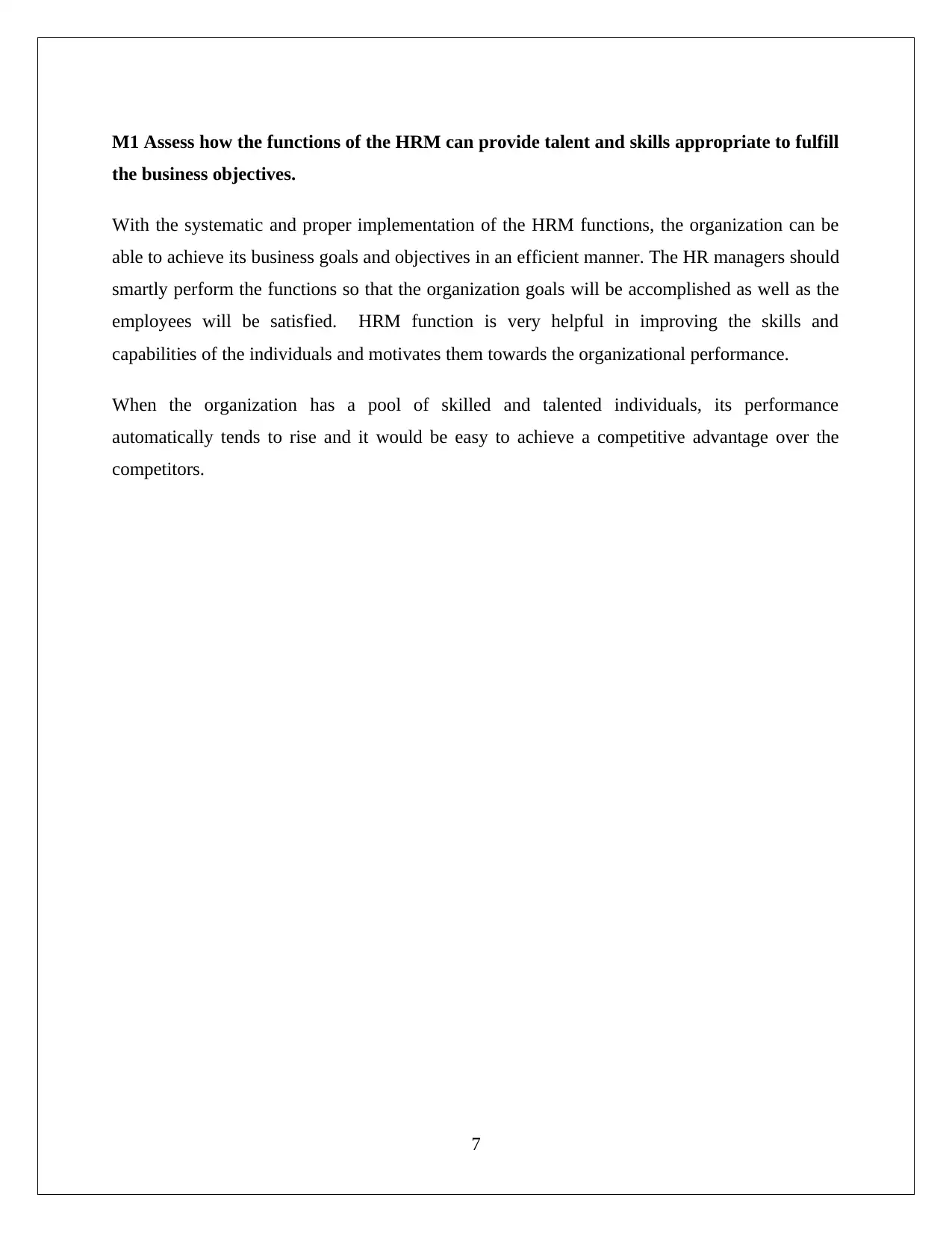
M1 Assess how the functions of the HRM can provide talent and skills appropriate to fulfill
the business objectives.
With the systematic and proper implementation of the HRM functions, the organization can be
able to achieve its business goals and objectives in an efficient manner. The HR managers should
smartly perform the functions so that the organization goals will be accomplished as well as the
employees will be satisfied. HRM function is very helpful in improving the skills and
capabilities of the individuals and motivates them towards the organizational performance.
When the organization has a pool of skilled and talented individuals, its performance
automatically tends to rise and it would be easy to achieve a competitive advantage over the
competitors.
7
the business objectives.
With the systematic and proper implementation of the HRM functions, the organization can be
able to achieve its business goals and objectives in an efficient manner. The HR managers should
smartly perform the functions so that the organization goals will be accomplished as well as the
employees will be satisfied. HRM function is very helpful in improving the skills and
capabilities of the individuals and motivates them towards the organizational performance.
When the organization has a pool of skilled and talented individuals, its performance
automatically tends to rise and it would be easy to achieve a competitive advantage over the
competitors.
7
Paraphrase This Document
Need a fresh take? Get an instant paraphrase of this document with our AI Paraphraser
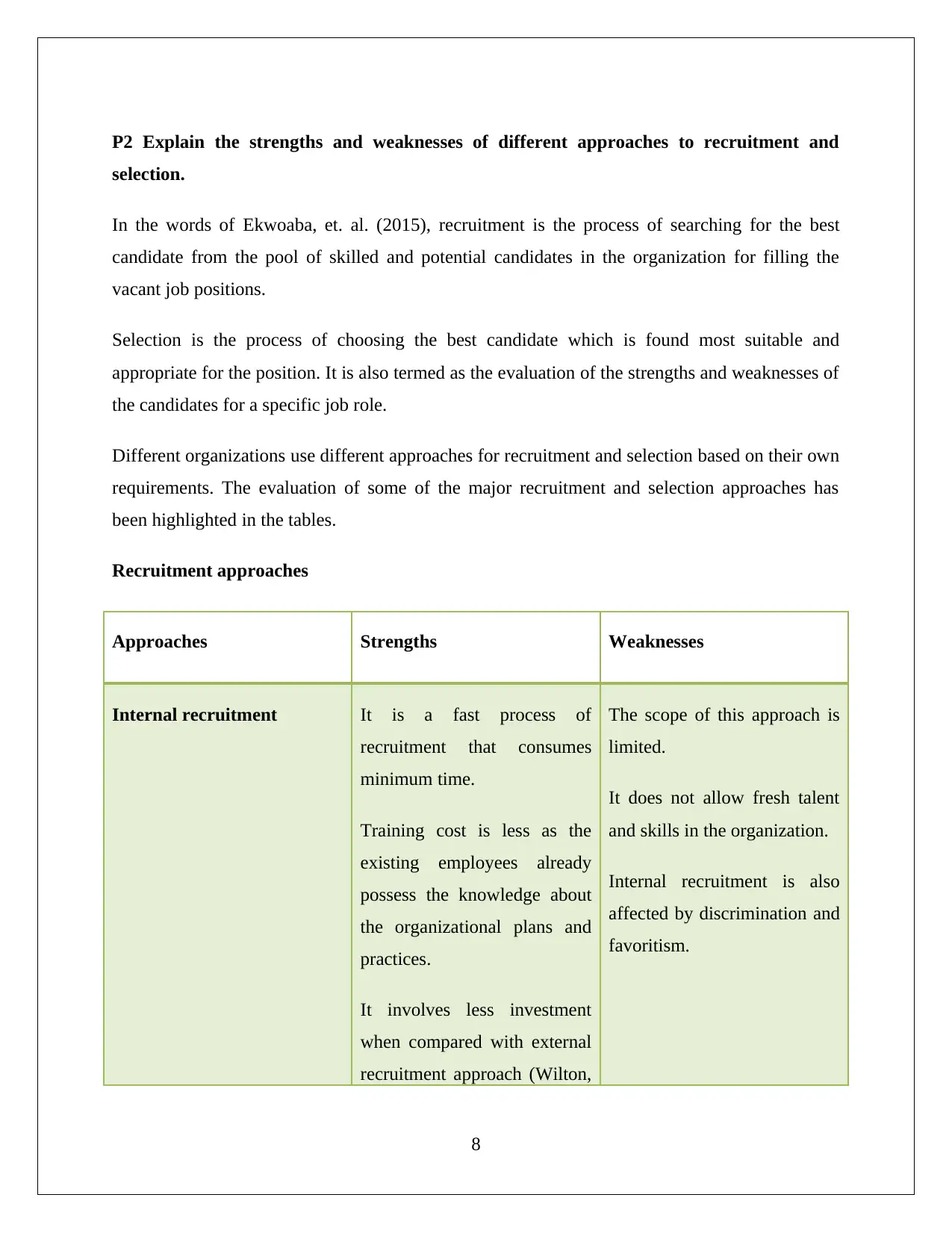
P2 Explain the strengths and weaknesses of different approaches to recruitment and
selection.
In the words of Ekwoaba, et. al. (2015), recruitment is the process of searching for the best
candidate from the pool of skilled and potential candidates in the organization for filling the
vacant job positions.
Selection is the process of choosing the best candidate which is found most suitable and
appropriate for the position. It is also termed as the evaluation of the strengths and weaknesses of
the candidates for a specific job role.
Different organizations use different approaches for recruitment and selection based on their own
requirements. The evaluation of some of the major recruitment and selection approaches has
been highlighted in the tables.
Recruitment approaches
Approaches Strengths Weaknesses
Internal recruitment It is a fast process of
recruitment that consumes
minimum time.
Training cost is less as the
existing employees already
possess the knowledge about
the organizational plans and
practices.
It involves less investment
when compared with external
recruitment approach (Wilton,
The scope of this approach is
limited.
It does not allow fresh talent
and skills in the organization.
Internal recruitment is also
affected by discrimination and
favoritism.
8
selection.
In the words of Ekwoaba, et. al. (2015), recruitment is the process of searching for the best
candidate from the pool of skilled and potential candidates in the organization for filling the
vacant job positions.
Selection is the process of choosing the best candidate which is found most suitable and
appropriate for the position. It is also termed as the evaluation of the strengths and weaknesses of
the candidates for a specific job role.
Different organizations use different approaches for recruitment and selection based on their own
requirements. The evaluation of some of the major recruitment and selection approaches has
been highlighted in the tables.
Recruitment approaches
Approaches Strengths Weaknesses
Internal recruitment It is a fast process of
recruitment that consumes
minimum time.
Training cost is less as the
existing employees already
possess the knowledge about
the organizational plans and
practices.
It involves less investment
when compared with external
recruitment approach (Wilton,
The scope of this approach is
limited.
It does not allow fresh talent
and skills in the organization.
Internal recruitment is also
affected by discrimination and
favoritism.
8
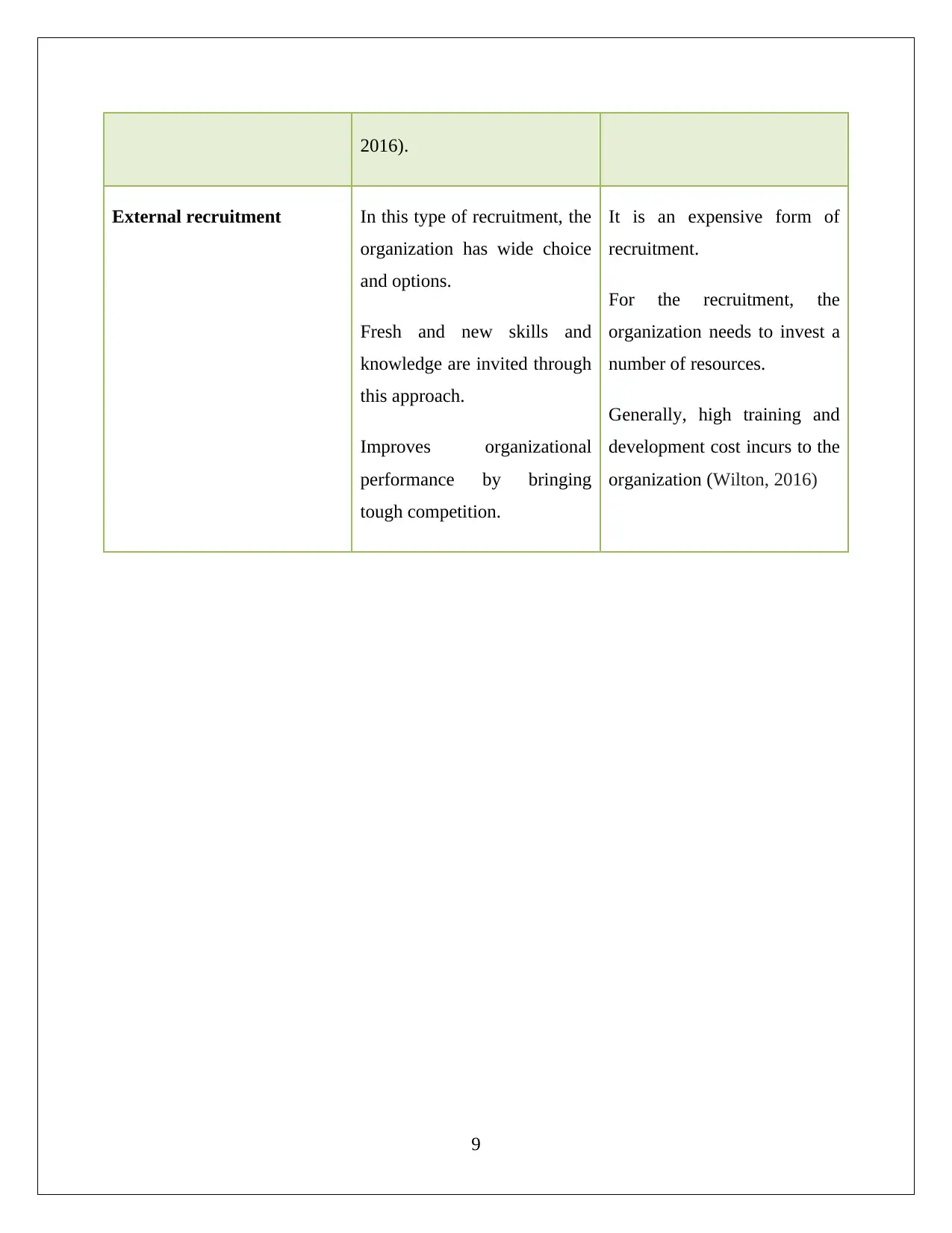
2016).
External recruitment In this type of recruitment, the
organization has wide choice
and options.
Fresh and new skills and
knowledge are invited through
this approach.
Improves organizational
performance by bringing
tough competition.
It is an expensive form of
recruitment.
For the recruitment, the
organization needs to invest a
number of resources.
Generally, high training and
development cost incurs to the
organization (Wilton, 2016)
9
External recruitment In this type of recruitment, the
organization has wide choice
and options.
Fresh and new skills and
knowledge are invited through
this approach.
Improves organizational
performance by bringing
tough competition.
It is an expensive form of
recruitment.
For the recruitment, the
organization needs to invest a
number of resources.
Generally, high training and
development cost incurs to the
organization (Wilton, 2016)
9
⊘ This is a preview!⊘
Do you want full access?
Subscribe today to unlock all pages.

Trusted by 1+ million students worldwide
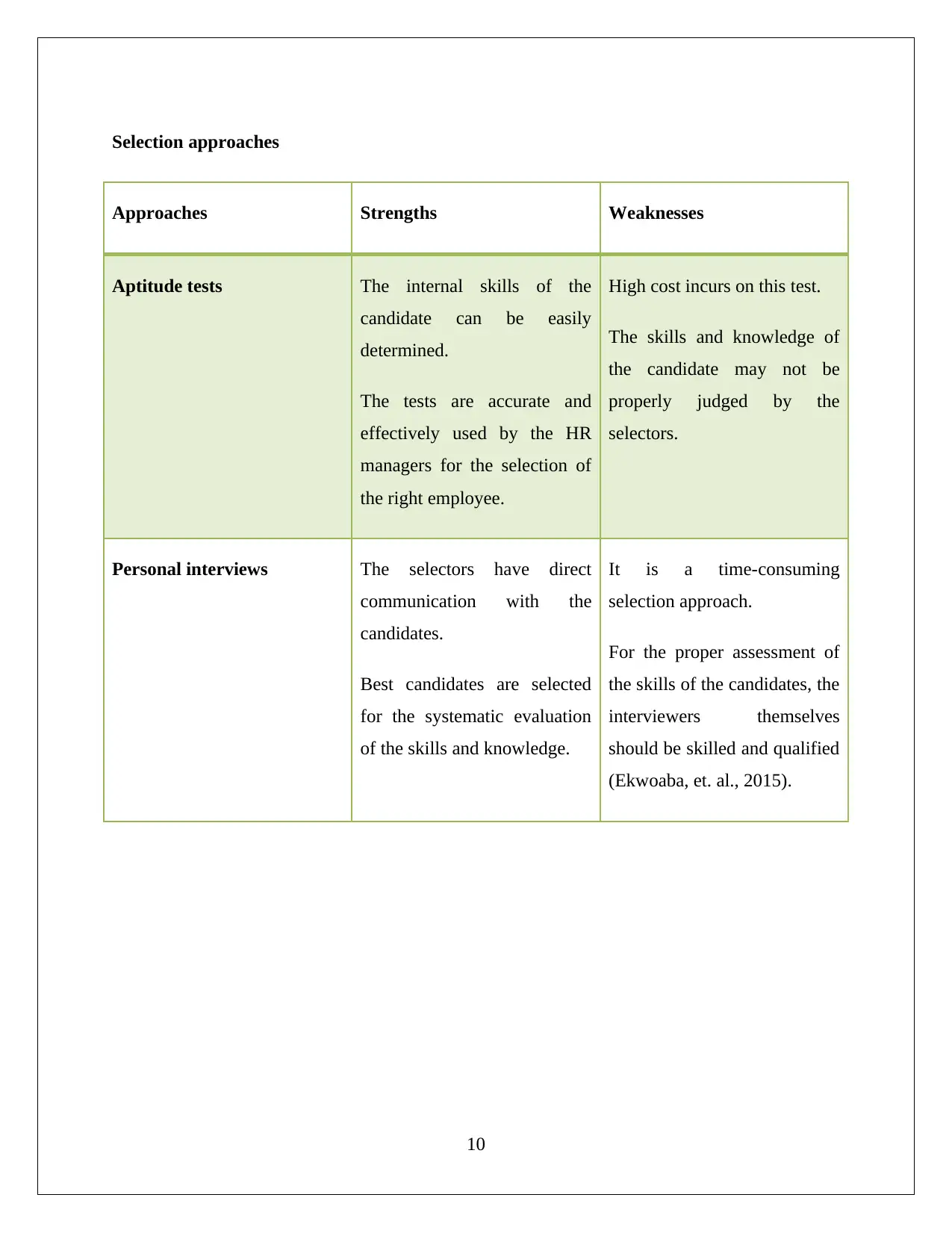
Selection approaches
Approaches Strengths Weaknesses
Aptitude tests The internal skills of the
candidate can be easily
determined.
The tests are accurate and
effectively used by the HR
managers for the selection of
the right employee.
High cost incurs on this test.
The skills and knowledge of
the candidate may not be
properly judged by the
selectors.
Personal interviews The selectors have direct
communication with the
candidates.
Best candidates are selected
for the systematic evaluation
of the skills and knowledge.
It is a time-consuming
selection approach.
For the proper assessment of
the skills of the candidates, the
interviewers themselves
should be skilled and qualified
(Ekwoaba, et. al., 2015).
10
Approaches Strengths Weaknesses
Aptitude tests The internal skills of the
candidate can be easily
determined.
The tests are accurate and
effectively used by the HR
managers for the selection of
the right employee.
High cost incurs on this test.
The skills and knowledge of
the candidate may not be
properly judged by the
selectors.
Personal interviews The selectors have direct
communication with the
candidates.
Best candidates are selected
for the systematic evaluation
of the skills and knowledge.
It is a time-consuming
selection approach.
For the proper assessment of
the skills of the candidates, the
interviewers themselves
should be skilled and qualified
(Ekwoaba, et. al., 2015).
10
Paraphrase This Document
Need a fresh take? Get an instant paraphrase of this document with our AI Paraphraser
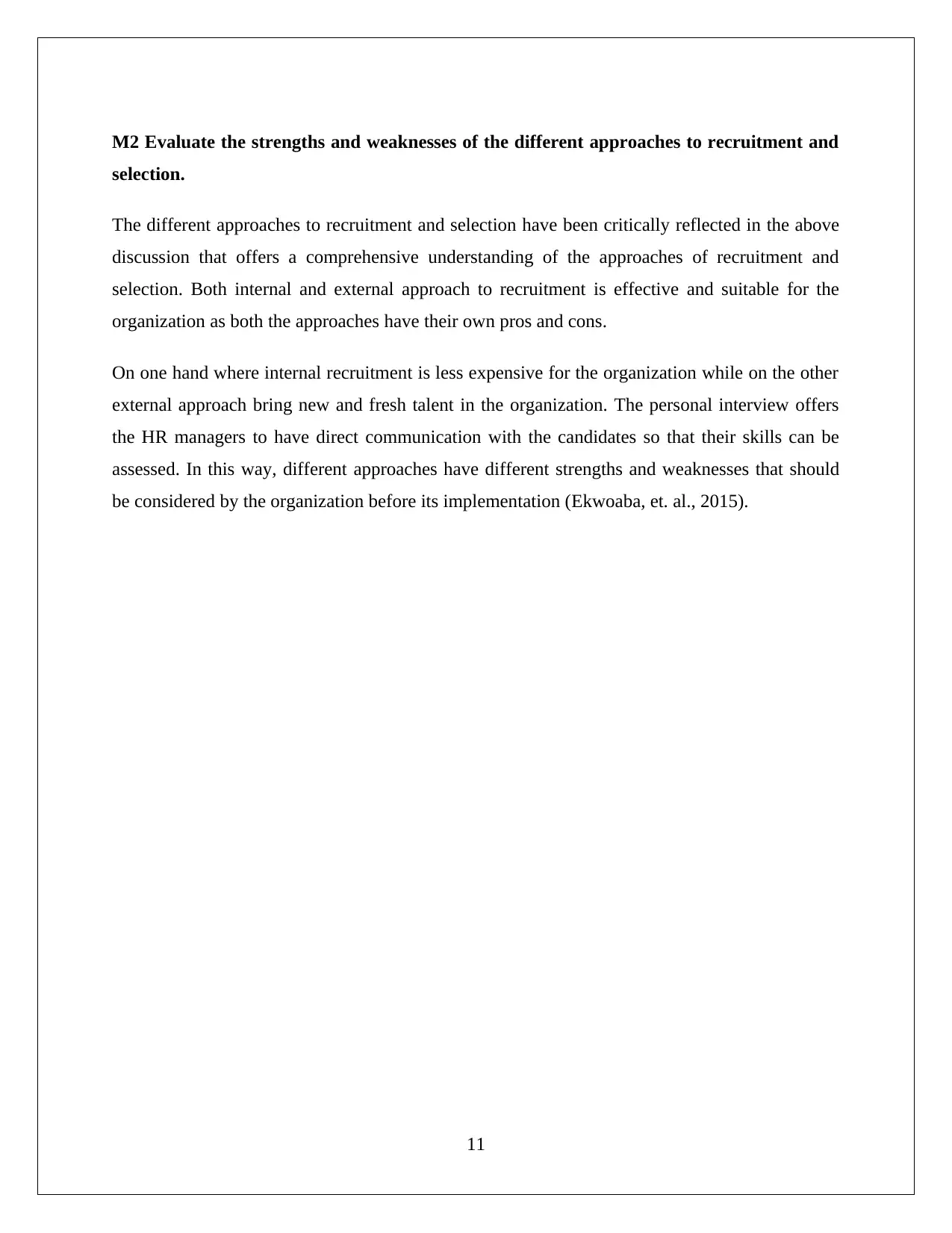
M2 Evaluate the strengths and weaknesses of the different approaches to recruitment and
selection.
The different approaches to recruitment and selection have been critically reflected in the above
discussion that offers a comprehensive understanding of the approaches of recruitment and
selection. Both internal and external approach to recruitment is effective and suitable for the
organization as both the approaches have their own pros and cons.
On one hand where internal recruitment is less expensive for the organization while on the other
external approach bring new and fresh talent in the organization. The personal interview offers
the HR managers to have direct communication with the candidates so that their skills can be
assessed. In this way, different approaches have different strengths and weaknesses that should
be considered by the organization before its implementation (Ekwoaba, et. al., 2015).
11
selection.
The different approaches to recruitment and selection have been critically reflected in the above
discussion that offers a comprehensive understanding of the approaches of recruitment and
selection. Both internal and external approach to recruitment is effective and suitable for the
organization as both the approaches have their own pros and cons.
On one hand where internal recruitment is less expensive for the organization while on the other
external approach bring new and fresh talent in the organization. The personal interview offers
the HR managers to have direct communication with the candidates so that their skills can be
assessed. In this way, different approaches have different strengths and weaknesses that should
be considered by the organization before its implementation (Ekwoaba, et. al., 2015).
11
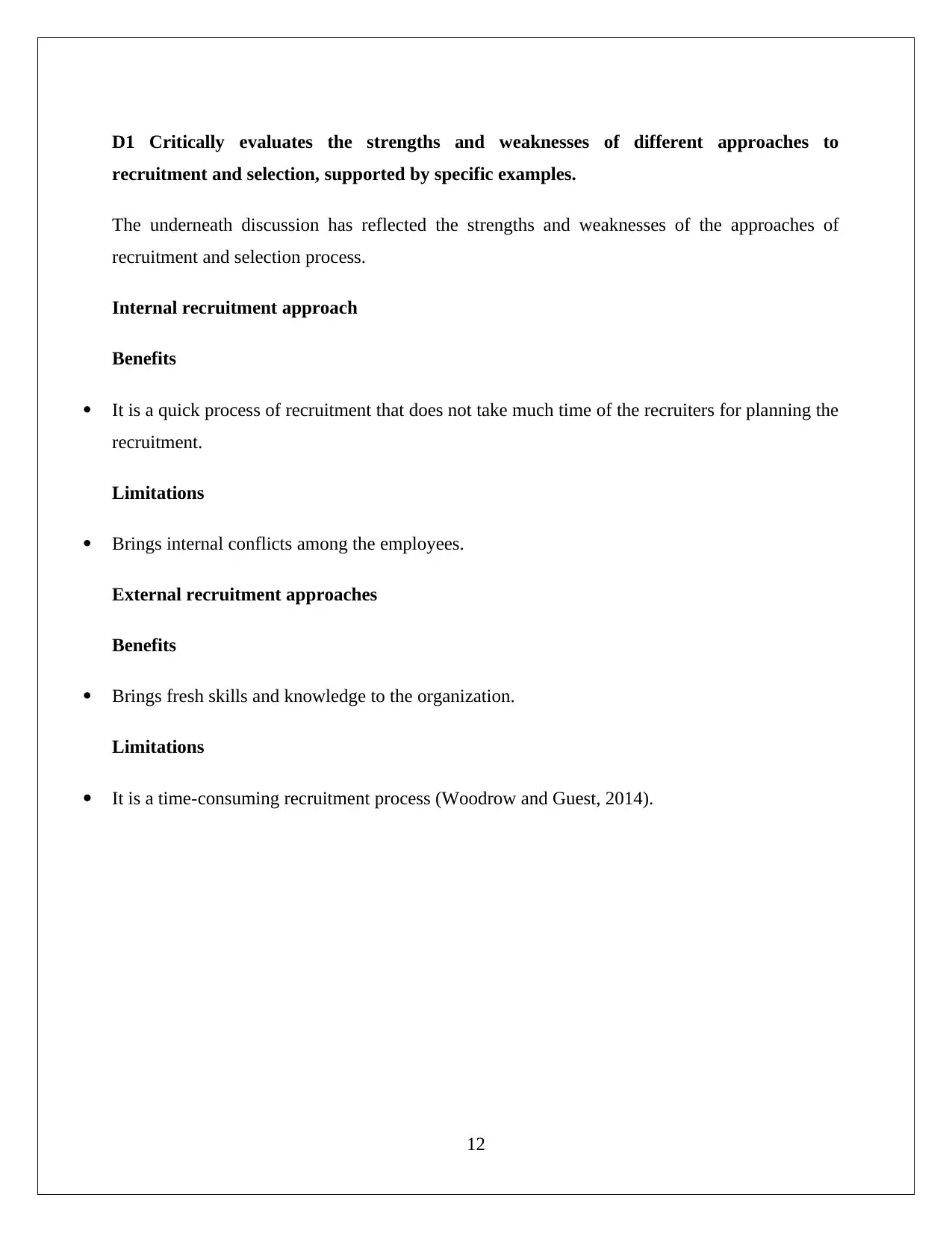
D1 Critically evaluates the strengths and weaknesses of different approaches to
recruitment and selection, supported by specific examples.
The underneath discussion has reflected the strengths and weaknesses of the approaches of
recruitment and selection process.
Internal recruitment approach
Benefits
It is a quick process of recruitment that does not take much time of the recruiters for planning the
recruitment.
Limitations
Brings internal conflicts among the employees.
External recruitment approaches
Benefits
Brings fresh skills and knowledge to the organization.
Limitations
It is a time-consuming recruitment process (Woodrow and Guest, 2014).
12
recruitment and selection, supported by specific examples.
The underneath discussion has reflected the strengths and weaknesses of the approaches of
recruitment and selection process.
Internal recruitment approach
Benefits
It is a quick process of recruitment that does not take much time of the recruiters for planning the
recruitment.
Limitations
Brings internal conflicts among the employees.
External recruitment approaches
Benefits
Brings fresh skills and knowledge to the organization.
Limitations
It is a time-consuming recruitment process (Woodrow and Guest, 2014).
12
⊘ This is a preview!⊘
Do you want full access?
Subscribe today to unlock all pages.

Trusted by 1+ million students worldwide
1 out of 30
Related Documents
Your All-in-One AI-Powered Toolkit for Academic Success.
+13062052269
info@desklib.com
Available 24*7 on WhatsApp / Email
![[object Object]](/_next/static/media/star-bottom.7253800d.svg)
Unlock your academic potential
Copyright © 2020–2025 A2Z Services. All Rights Reserved. Developed and managed by ZUCOL.





